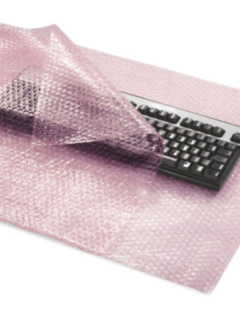Producing handicrafts is a demanding job, especially in the case of highly complex projects. While the production itself is not a major problem and does not generate the risk of damage, the transport does. So how do you send your handicrafts by courier to avoid possible damage to the created project? Take a look at this guide and find out how to pack your handicrafts so that they arrive intact.
Packing your crafts for courier delivery – where do you need to start?
Producing DIY products and handicrafts of considerable material value takes a huge amount of time and also requires the full commitment of the designer. Finished works, where the completion time is up to several hundred hours, should be protected so as to reduce the risk of damage during shipping to zero.
In order to pack your handicraft for shipping by courier, first of all, you need to choose a reliable courier company and determine the weight and dimensions of the created handicraft. Only then can you proceed to the next steps of action and prepare the appropriate parcel security.
How do I secure my handicrafts in a courier parcel? Practical tips for artists
Do you create handicrafts and are involved in shipping them to potential customers? Then you need to ensure that your products are transported without the risk of any damage. Handicrafts are not only sculptures, but also any other handmade products. Or perhaps you want to find out, how to pack candles for shipment? The rules are similar to those for all other DIY products of similar dimensions.
When preparing to pack your handicrafts for shipment, consider the following tips.
- Choose a type of packaging that is suitable for the type of craft. You will use different packaging materials for DIY jewellery and others for large-scale sculptures.
- Determine what additional protections you will use to pack your handicraft for courier delivery. You can use bubble wrapbubble wrap, cardboard dividers or kraft paper.
- Choose appropriate markings to use on your prepared shipment. You can use warning labels and courier kangaroo tags to stick on the shipping label.
- Plan how you will close your craft consignment. In the case of shipping in cardboard boxes, usually only packing tape dedicated to courier shipments is sufficient. Palletised transport of handicrafts requires not only crates, but also wrapping the consignment in stretch film – this protects the goods from moisture.
Remember that filling the parcel is crucial when it comes to shipping handicrafts. The safety of custom-made goods depends on the material used to fill the parcel. If the gaps are filled correctly, for example with bubble wrap or paper filler – there is virtually no risk of the item being damaged in transit.
Find out also, how to check the strength of a cardboard box. On the RAJA blog you will find a lot of useful information on this subject. This will help you better match the type of corrugated cardboard packaging to the type and dimensions of the crafts you are sending.
Packing a handicraft for shipment – what operational materials to use?
The procedure for securing your handicrafts for shipment by courier you need to start first of all by getting the necessary packing materials. This is essential to prepare the created handicraft so that it will not be damaged during transport by the courier company. If the created artwork is a painting, poster or sculpture, you can use such operational materials as:
- Shipping cartons – this type of packaging is ideal for shipping small items, such as handmade jewellery, custom-decorated clothing and small wall paintings.
- 7-ply corrugated cardboard boxes – such packaging is a great choice if you are sending extremely sensitive handicraft creations to your customers. The thick walls, reinforced bottom of the packaging and convenient box closure means that even impacts from the outside won’t pose a real threat to the item being sent.
- Boxes – such shipping materials are ideal for sending larger handicrafts by courier. The box pallet is durable, resistant to mechanical damage and ideally suited to the size of shipping pallets and half-pallets. By packing your handicrafts in this way, you are guaranteed that your order will arrive in perfect condition.
- Cardboard tubes – These will work better for shipping items that have undergone restoration, such as old decorative swords, wall hangings and the legs of an antique table.
- Bubble envelopes – If your handicrafts are small DIY items, such as jewellery, there is no objection to packing them for shipping in bubble envelopes. The bubble layer protects the items well against mechanical damage, as well as the effects of possible moisture.
When deciding to pack your handicrafts for shipping, be sure to choose only the best packing materials and parcel fillings. The higher the quality of carton you choose, the greater the certainty that your handicraft will arrive intact, even without the slightest damage.
Or perhaps you would like to find out how to pack fragile items for shipment? In the RAJA guide you will find plenty of useful tips to put into practice. These will also work perfectly for packing your handicrafts for shipping.
Shipping handicrafts by courier – how much does it cost and how to estimate the costs?
Having the skills and knowledge of how to secure your handicraft for shipping is not all you need to take care of. Before ordering a shipment, it is worth analysing the price lists of courier companies in order to choose the most favourable option – not only in terms of cost, but also in terms of the quality of the service provided.
Average prices for the dispatch of parcels up to 30 kilograms with handicrafts are at the level of PLN 30-40 upwards in Poland. Palletised box shipments cost on average from around PLN 120 for a single transit. If you decide to ship your handicrafts internationally, you have to reckon with costs of up to several hundred zlotys – of course with full insurance of the shipped handicrafts.
Securing your handicrafts for shipping – are professional operating materials enough?
To pack your handicrafts for shipment, you only need to stock up on a few useful packing materials. These include not only cartons of sturdy corrugated cardboard, but also parcel fillers, bubble wrap and strong packing tapes, which will be able to keep the carton closed for a long time, regardless of the purpose of the shipment.
Without the right parcel packing materials, you won’t be able to prepare your created handicraft for shipping directly to your customer or you’ll simply expose your product to damage. If you’re in the business of creating sculptures and other products for individual customer orders, it’s also essential to find out how to package your handicrafts and get them through the courier service for delivery.













